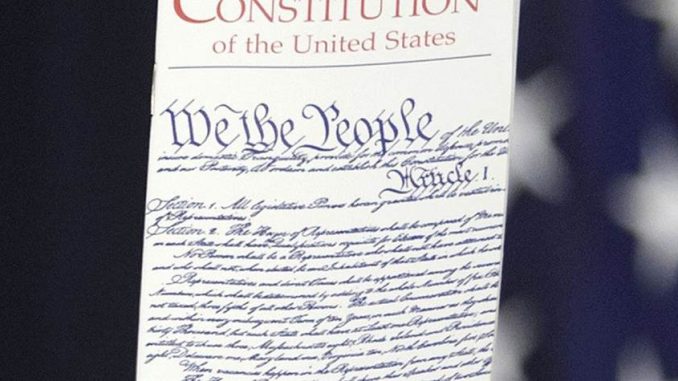
NARA provides a Catalog and web pages with access to many millions of descriptions and digital copies of the permanent records of the United States federal government, according to its own description. It has been determined that these documents contain “some content that may be harmful or difficult to view.” NARA opines that “some of the materials presented here may reflect outdated, biased, offensive, and possibly violent views and opinions. In addition, some of the materials may relate to violent or graphic events and are preserved for their historical significance.” Our latest example of woke governance “is committed to working with staff, communities, and peer institutions to assess and update descriptions that are harmful and to establish standards and policies to prevent future harmful language in staff-generated descriptions.”
It’s quite the word salad being served up to justify such an idiotic action. Is NARA declaring itself the gatekeeper of the English language as other agencies have done? For example, the CDC has published a “non-stigmatizing language” guide. We’d prefer they devote their time to disease control and prevention, its mission, but apparently, things are going so well with deadly viruses and diseases that there is free time to reinvent the English language. NARA doesn’t want to be left behind.
Perhaps we should have seen this coming. After all, the building that displays our founding documents, the Rotunda at the National Archives, came under attack by the woke scolds who claimed it is structurally racist. A need for safe spaces and trigger warnings was found to protect visitors. If it is time to “reimagine the Rotunda” it must be time to reimagine our founding documents or any historically relevant documents going forward. There is a burning desire among the progressive left and others who hate the American experiment to erase our history. Our history is our history, though, and there is no changing of actual events through recorded history that will prove otherwise. The woke among us are offended that America was founded by white European males who were as flawed and human as any of their time.
If a visit to the Rotunda is enough to require a safe place to cope with being triggered by our founding documents, it follows that now the keepers of the documents want to tweak them, too. Here is an explanation of what we’re talking about.
Some items may:
reflect racist, sexist, ableist, misogynistic/misogynoir, and xenophobic opinions and attitudes;
be discriminatory towards or exclude diverse views on sexuality, gender, religion, and more;
include graphic content of historical events such as violent death, medical procedures, crime, wars/terrorist acts, natural disasters and more;
demonstrate bias and exclusion in institutional collecting and digitization policies.
It’s as though we only now realize that history can be ugly, democracy is messy, and war is violent. Good heavens. We do live in incredibly stupid times. NARA throws the archivists under the bus and calls for reforms made in exhibit descriptions. Some descriptions were written many years ago using language from that time, you know, like the language in the founding documents. Going forward there will be “standards and policies” on language.
Archivists choose what language to use when describing materials. Some of these descriptions were written many years ago, using language that was accepted at the time.
Archivists often re-use language provided by creators or former owners of the material. This can provide important context, but it can also reflect biases and prejudices.
Archivists often use a standardized set of terms, such as the Library of Congress Subject Headings, to describe materials. Some of these terms are outdated, offensive, or insensitive.
In the past, the National Archives has not had standards or policies to help archivists avoid harmful language.
Had enough yet? Wait. There’s more. How will this all be handled? Warnings will be put in place and lame commitments to “diversity, equity, inclusion, and accessibility” are voiced. The commitments are pretty standard today to assuage liberal white guilt.
Examples include:
informing users about the presence and origin of harmful content;
revising descriptions and standardized sets of descriptive terms, supplementing description with more respectful terms, or creating new standardized terms to describe materials;
researching the problem, listening to users, experimenting with solutions, and sharing our findings with each other;
evaluating existing processes for exclusionary practices or institutional bias that prioritize one culture and/or group over another;
making an institutional commitment to diversity, equity, inclusion, and accessibility.
The U.S. National Archives cleaned it all up a bit on Twitter as the story came out. It noted that warnings are placed online, on the web page. Apparently, we don’t have to worry about original documents being rubber-stamped with warnings. Yet.
This alert is not connected to any specific records, but appears at the top of the page while you are using the online Catalog (https://t.co/dwGmbXhjFP).
To learn more about why the alert about harmful language appears in our Catalog, please go to https://t.co/E3uoAKaF5J
— US National Archives (@USNatArchives) September 7, 2021
Via Hot Air
